Extending Home Networks - A Comparison of G.hn, HomePlug AV2 and Wi-Fi Mesh
by Ganesh T S on December 7, 2016 8:00 AM ESTPLC Performance: ARRIS SBX-1000P (G.hn) vs. D-Link DHP-P701AV (HomePlug AV2)
The ARRIS SBX-1000P is a wired network extender based on G.hn technology. It is meant to be used in conjunction with a RipCurrent router such as the SBR-AC1900P. The aspect that differentiates the SBR-AC1900P from other AC1900 routers is the integration of a G.hn PLC chipset inside the router itself. Otherwise the design is a standard Broadcom-based AC1900 router (Broadcom BCM4709A as the SoC and the Broadcom BCM4360 for the 3x3:3 an+ac / bgn 5 GHz and 2.4 GHz radios). The G.hn PLC chipset is from Marvell - the 88LX3142 for the digital baseband and the 88LX2718 for the analog front end.
The SBX-1000P is a simple PLC node with a single Ethernet port. It uses the same Marvell platform as the G.hn segment of the SBR-AC1900P. Similar to the Comtrend PG-9172 that we reviewed earlier, it comes with MIMO support and G.hn / HPAV co-existence technology.
The D-Link DHP-P701AV is an AV2 2000-class HomePlug AV2-compliant PLC kit. It uses the Broadcom BCM60500 chipset. It earns the AV2 2000 designation, thanks to its MIMO capabilities and the use of the full possible spectrum allowed by HomePlug AV2 - 2 to 86 MHz.
Note that this kit is meant to be used in conjunction with a regular router. There are products such as the Nighthawk DST in the market that combine the router and PLC chipset in a single unit (like the ARRIS kit we just discussed above). However, the Nighthawk DST uses a cheaper SISO version of the Broadcom chipset that is only AV750-class.
In any case, we are going to compared wired backhaul over power lines using the best possible products that G.hn and HomePlug AV2 currently have in the market. The graphs below shows the TCP and UDP downlink and uplink speeds across the six different locations in our test setup.
In almost all cases (except for a few UDP ones), the HomePlug AV2 2000-class D-Link DHP-P701AV delivers better throughput. This is in contrast to the previous review of the Comtrend PG-9172, where the G.hn kit could hold its own against the AV2 1200 products. The upcoming generation of G.hn chipsets promises better performance - it remains to be seen if that makes G.hn achieve performance parity with HomePlug AV2 in our particular test setup.


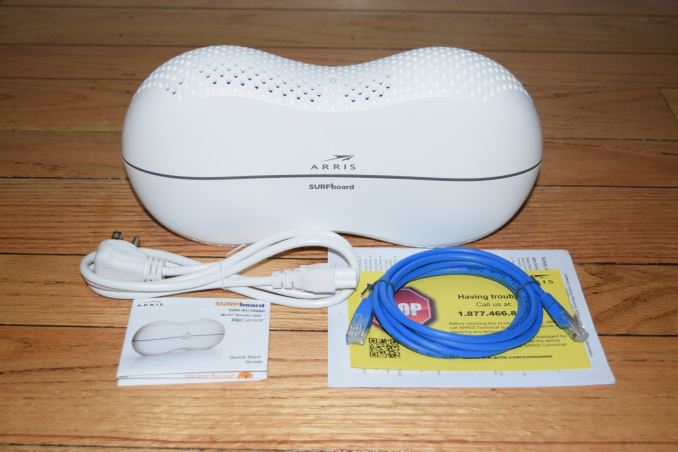

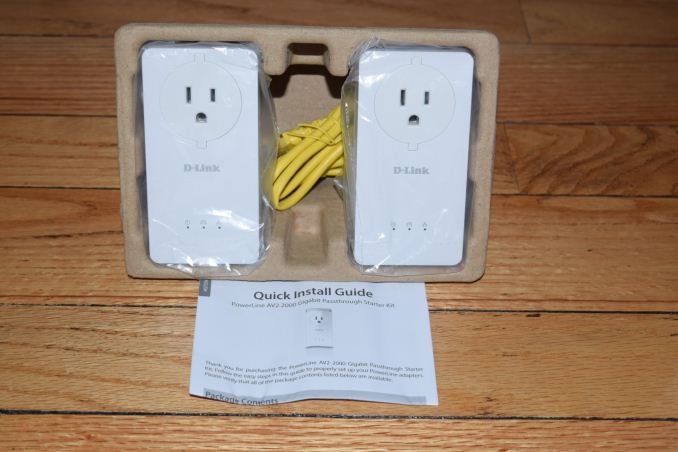
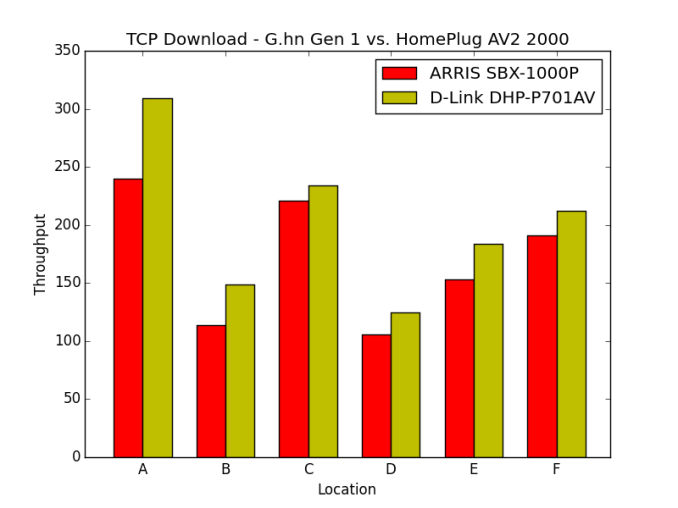
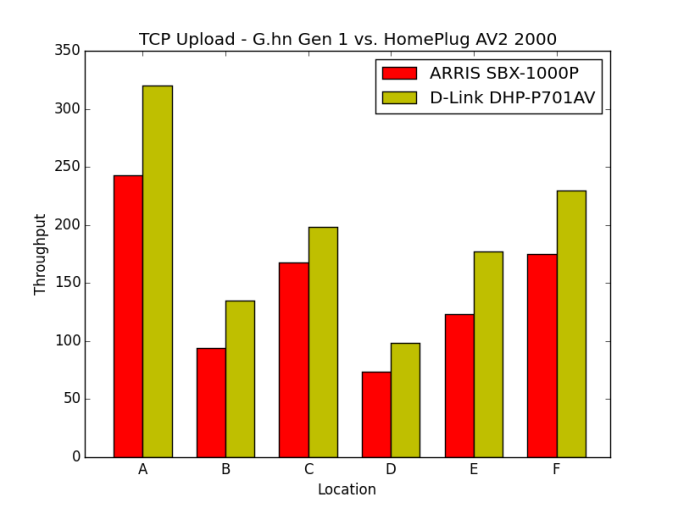
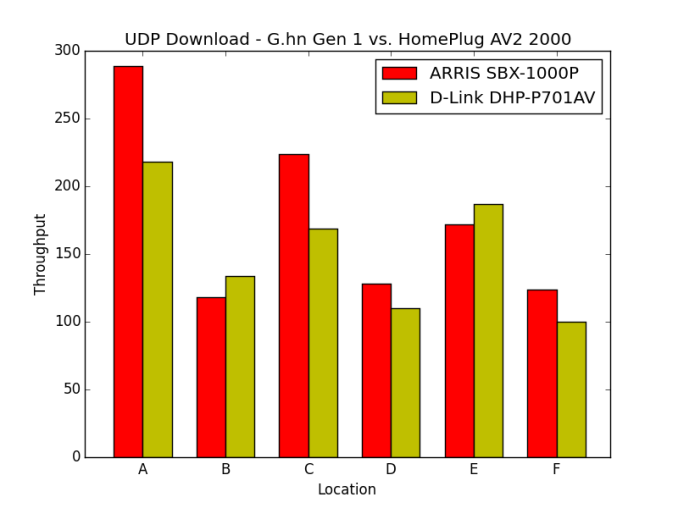
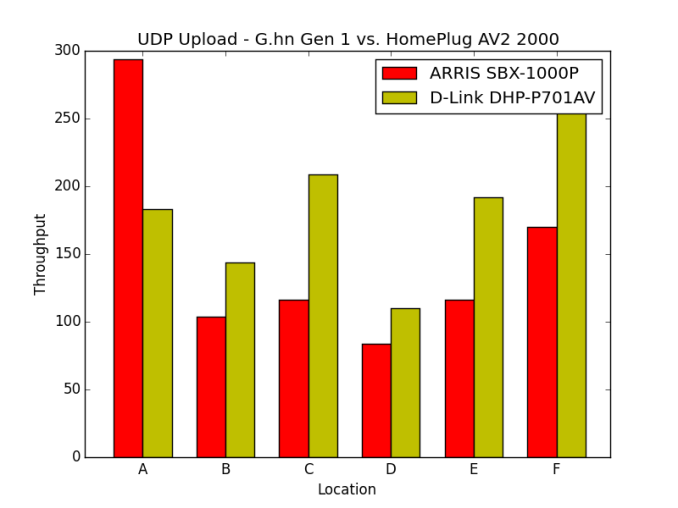








56 Comments
View All Comments
neo_1221 - Wednesday, December 7, 2016 - link
Actually the Ubiquiti stuff is quite reasonably priced - you can get an AC Lite (2x2) for $75 or the Pro (3x3) for $130.Impulses - Wednesday, December 7, 2016 - link
That's pretty much the same as any decent consumer grade AC router... Gonna have to look into it if/when my 2x ASUS RT-AC68 bite it (one is bridged), they've been working alright for a while now. If they last as long as my first (and only other) router, WRT54Gs, it could be a decade. The fam will just have to deal with multiple SSID until then... :Pname99 - Thursday, December 8, 2016 - link
That's misleading, You also have to buy the PoE infrastructure because most people won't have that in their houses.And ubiquiti is still a pain to set up. Yeah, yeah, we all know you're an IT stud and consider it trivial, but be honest here. Would you give your parents or your girlfriend 3 ubiquiti boxes, tell them "oh, it's easy to set up, totally obvious" and leave them to it?
vanilla_gorilla - Thursday, December 8, 2016 - link
Are your parents posting comments on Anandtech? I'm pretty sure anyone reading this site is capable of navigating the Ubiquiti GUI. The only "PoE infrastructure" you need are the (included) power injectors.igavus - Thursday, December 8, 2016 - link
There's mikrotik, but probably won't end up being much cheaper.. I mean, it's a commodity product and the margins aren't that highsor - Wednesday, December 7, 2016 - link
The zero handoff doesn't work for their AC products. It's really only useful for VOIP anyway, as a properly configured setup will roam with minimal downtime anyway. OP needs to see if they have RSSI settings for their APs, and possibly turn signal strength down. The APs should be kicking off clients when the link is weak.The advantage of the "mesh" packages are that the APs are preconfigured to only allow clients with good signal. If you build your own you have to do that yourself, because single APs are preconfigured to serve as much as possible.
jamyryals - Wednesday, December 7, 2016 - link
Awesome, I'll look into min RSSI, thanks.phoenix_rizzen - Wednesday, December 7, 2016 - link
Just configure all your APs to have the same SSID and let the clients switch between them as the signal degrades. You only need fancy "enterprise" APs for really old devices that don't handle the switch very well. Android and iOS devices from the past few years have gotten much better about switching between BSSIDs when stronger signals are detected, without changing SSIDs.I ran this setup at home with 802.11n APs all running off the same SSID without any issues. I only swtiched to separate SSIDs when I replaced one with an 802.11ac AP. Having the same SSID for 2.4 GHz and 5 GHz networks didn't play well with our Samsung phones (would default to the 5 GHz radio, even if the 2.4 GHz signal was stronger / provided a faster link). Since switching to separate SSIDs for each band, things have been much smoother.
The "enterprise" gear works slightly better as it's the APs managing the connection and will kick the device off, forcing it to connect to a stronger signal, but it's not required to make single-SSID networks work.
sor - Wednesday, December 7, 2016 - link
Setting min RSSI settings for the 2.4 and 5 with the same SSID might help. It did for me. It's really key to ensuring that the clients are only using APs and frequencies that are actually good and usable.Dug - Wednesday, December 7, 2016 - link
Change the roaming aggressiveness in the nic properties if you are running Windows. It will switch a lot quicker to the stronger signal.